Chances are that you may be able to name all the seven wonders of the world speedily. But, how many of you are familiar with the seven wonders of the ancient world? These remarkable constructions of classical antiquity attest the inventiveness and endurance of humans who walked the earth during the earliest civilisations known to mankind. Let’s go back in time and acquaint ourselves with the seven wonders of the ancient world.
Also read: Angkor Wat – The Most Ancient Seven Wonders of The World
1. The Great Pyramid of Giza
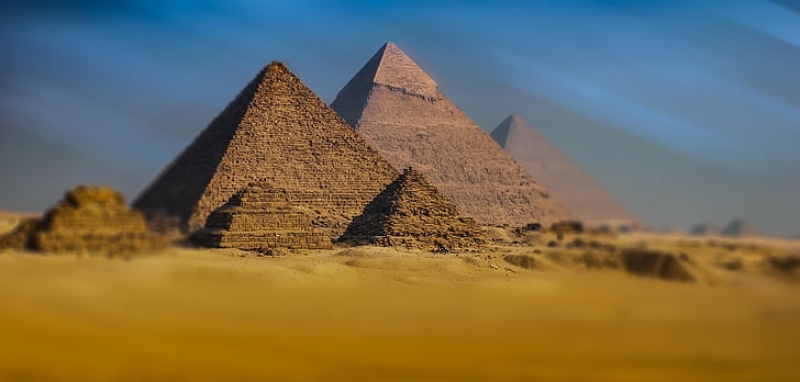
Image credit: Pickpik
Built during 2584 and 2561 BCE under the reign of King Kufu, The Great Pyramid of Giza is the oldest and largest of the three pyramids at Giza. The grand tomb was to house the powerful pharaoh and everything he would need to flourish during his life after death. To add on to its allure, it is the only wonder of the ancient world that still exists today. At one point of time, it was the tallest structure erected by human hands. The imposing edifice ( with a base of 230 metres and an original height of 147 metres) held the record for four millennium until the Eiffel Tower completed construction in 1889.
2. Statue of Zeus at Olympia
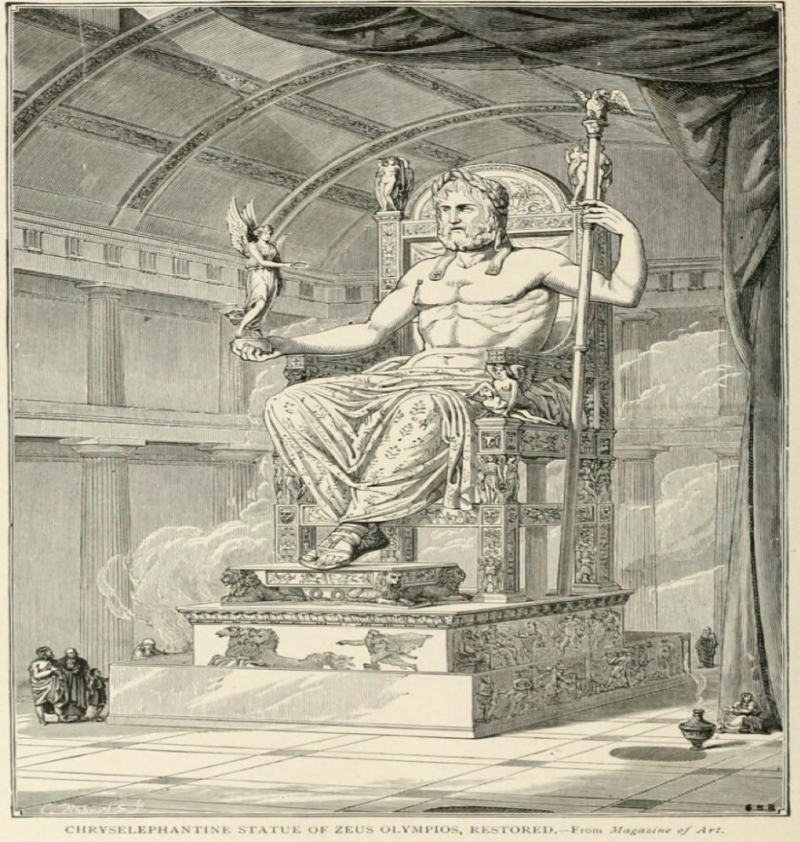
Image credit: Patrick Gray
An impressive statue of Zeus, the greek god of the sky and thunder, once glittered in gold and ivory in a temple in Olympia, the birthplace of the Olympic Games. The effigy, almost 12 metre tall, portrayed the king of the gods – bare-chested – plonked on a wooden throne. It was elaborately decorated with precious stones. Pilgrims from across the Mediterranean included this marvel into their must-see list. The Status of Zeus added lustre to the temple for more than eight centuries. It was shifted to a temple in Constantinople (Istanbul), reducing to ashes in a fire that broke out in 462.
3. Hanging Gardens of Babylon
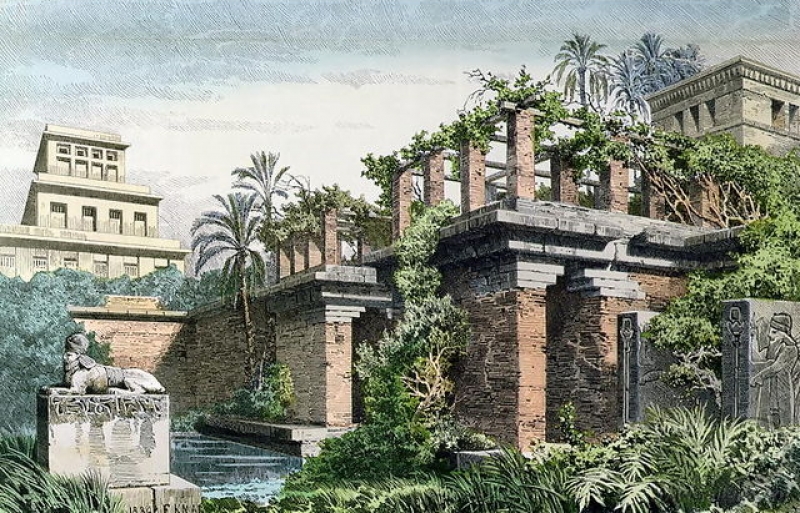
Image credit: Ferdinand Knab
According to what is generally believed, the olden gardens were situated near the royal palace in Babylon, approximately 80 kilometres south of modern Baghdad in Iraq. There were many speculations as to the exact location of one of the ancient wonders in the world. While some believe the Hanging Gardens of Babylon ‘’hang’’, others are certain that they were instead “up in the air”. However, what is known is that Babylonian king Nebuchadnezzar II established the gardens to give solace to his lover, Amytis, who pined for the natural beauty of her homeland.
4. Temple of Artemis at Ephesus
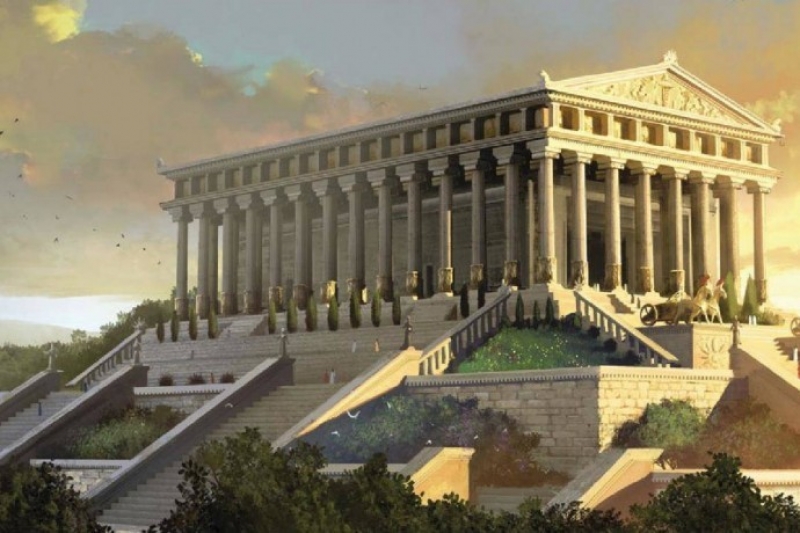
Image credit: Istanbul Clues
“Lo, apart from Olympus, the Sun never looked on anything so grand”, Antipater of Sidon (often ascribed with putting together the Seven Wonders of the Ancient World) wrote in a poem. It was once heralded as the most magnificent temple in ancient Mediterranean at its time of completion. This is largely due to its sheer size (about 110 by 55 metres) and the intricate works of art that enhanced it. Built in honour of Artemis, one of the three maiden goddesses of Olympus, it was deliberately destroyed by a madman named Herostratus in a vainglorious act of arson. He wanted his name to go down in history and so it did. Reconstruction of the temple began six years later. But, during the Gothic invasion of c. 267 CE. it was once again demolished. What’s left of the Temple of Artemis today is only the foundation and a solitary column.
Also read: 5 Beautiful Places in Turkey You Need to Visit
5. Lighthouse of Alexandria
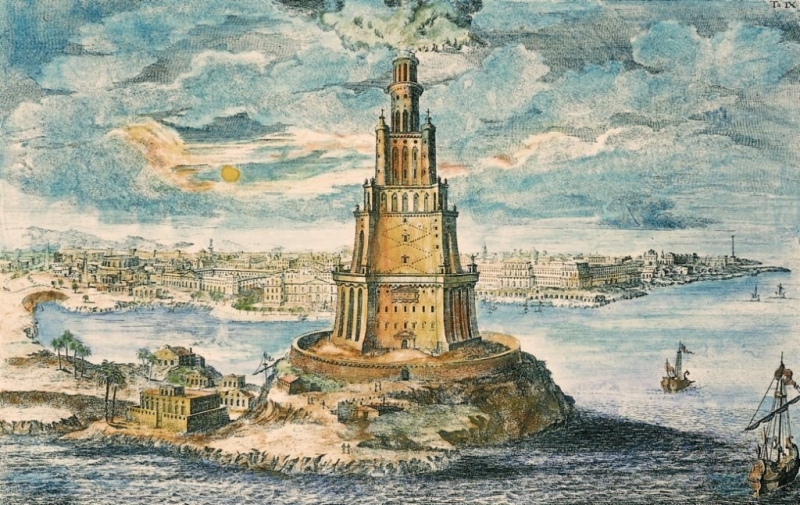
Image credit: Johann Bernhard Fischer von Erlach
The Lighthouse of Alexandria stood over 100 metre tall and was the typification of all lighthouses since. Commissioned in 299 BCE by king Ptolemy I Soter of Egypt, it was designed by a friend of his, Sostratus of Cnidus. The architect incorporated mirrors into the structure to reflect sunlight for miles out to sea and guide ships into Alexandria. It withstood a series of earthquakes but was razed to the ground by a strong tremor sometime around 1375 A.D. After being lost for centuries, several French archaeologists rediscovered its remains on the seafloor of Alexandria’s harbour in 1994. Egyptian minister of antiquities had announced a plan to build an underwater museum to showcase the submerged ruins.
6. Colossus of Rhodes
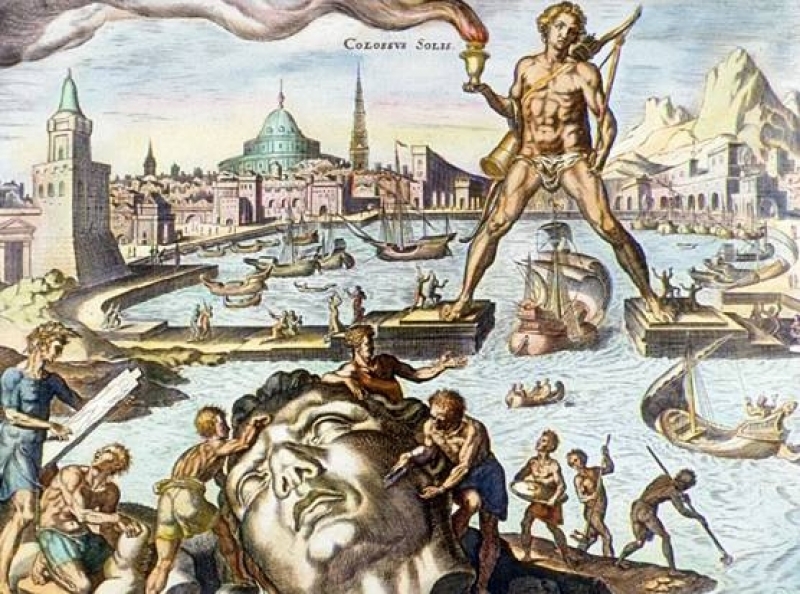
Image credit: Marten van Heemskerck
A gargantuan statue of the sun god Helios towering 33 metres was nestled in all its glory in the ancient city of Rhodes. It was built to pay homage to the Rhodians’ triumphant protection of their island against a siege led by a Macedonian leader in 305 B.C. Money collected by the sale of discarded military equipment funded the construction. The massive size of the sculpture displayed the Rhodians’ might and the god who empowered them to succeed. It was made of bronze and reinforced with iron, taking twelve years in the making. However, it only stood for slightly over 50 years. An earthquake shattered certain parts of the city of Rhodes in 226 or 225 B.C and toppled the Colossus.
7. Mausoleum at Halicarnassus
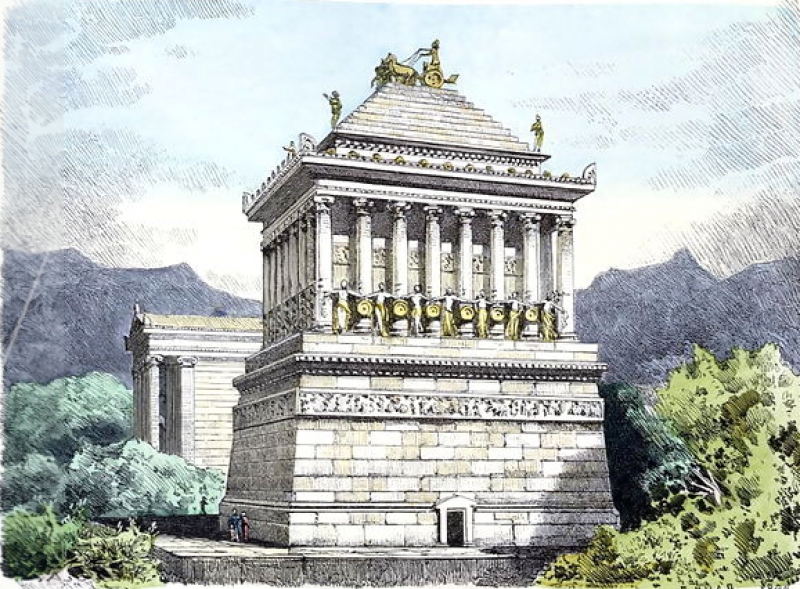
Image credit: Ferdinand Knab
The Mausoleum of Halicarnassus, as its name suggests, was a tomb built for Mausolus of Caria, a Hellenistic ruler in Asia Minor. After his demise in 353 BCE, his beloved wife, Artemisia, ordered the construction of the monument to honour him. Legend has is that the widow (and sister), who was heavy with sorrow, drank a potion concocted with her husband’s ashes and herself became the ‘living tomb’. She was held in high esteem for her devotion towards her better half and was ultimately buried inside the mausoleum after her passing. The structure in Halicarnassus (modern-day Bodrum in Turkey) captivated many for nearly 1800 years. Similar to the other ancient wonders of the world, earthquakes in the 15th century reduced it to shambles.
Also read: Experience the Wonders of the World, Right Here in Thailand!
The seven wonders of the ancient world are all truly impressive. While only the pyramids stand today, the grandeur and prolificacy of the other sites that mark an epoch in the old days can be gleaned from historical accounts.




